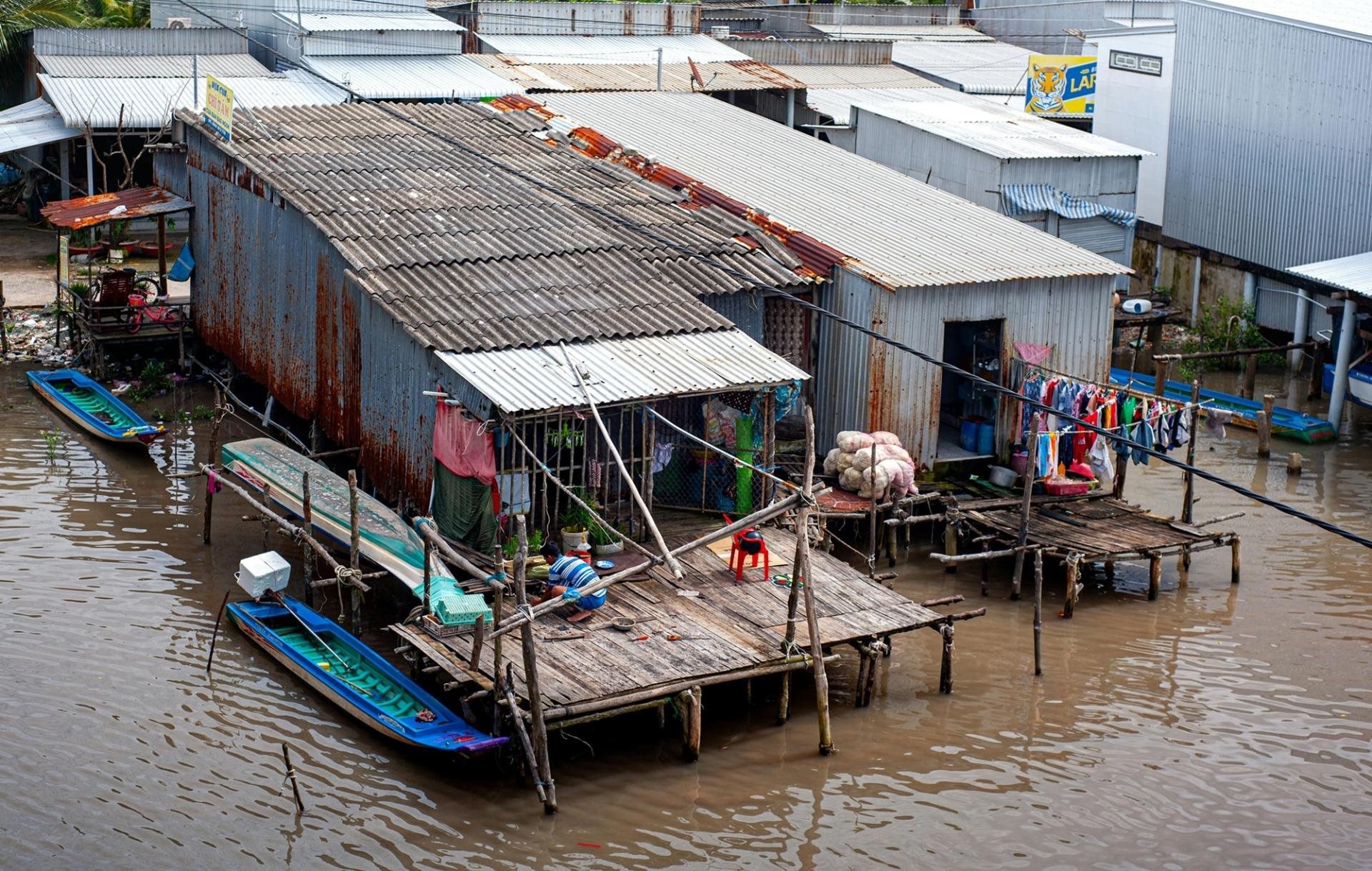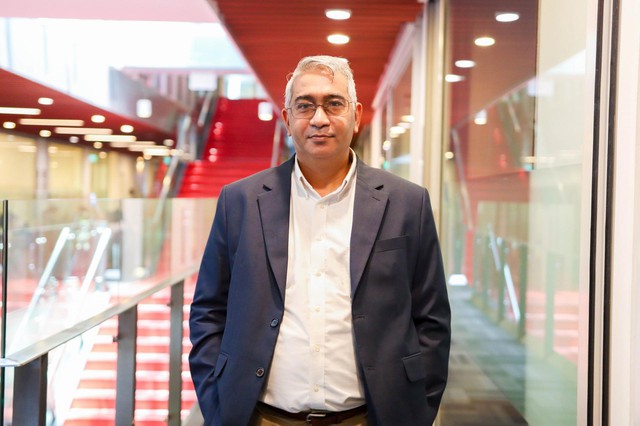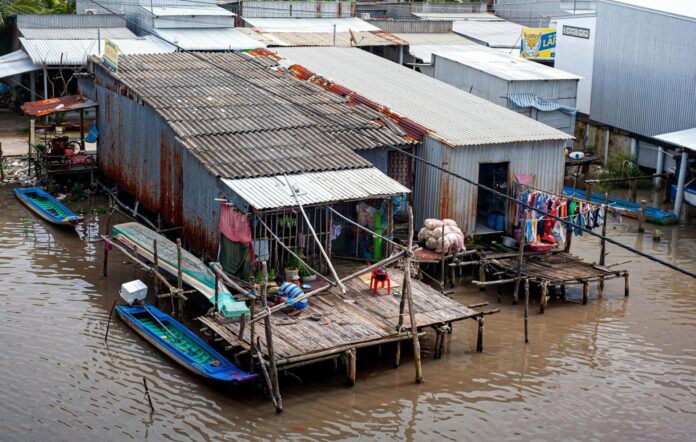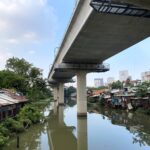
Hundreds of thousands of families in Vietnam continue to face housing difficulties.
In April 2024, Prime Minister Pham Minh Chinh launched a national movement to eradicate all temporary and dilapidated housing with the goal of completing this task by December 31, 2025, at the latest.
From 2000 to 2023, more than 1.7 million houses were built or repaired for families in difficult circumstances. However, approximately 240,000 houses remain to be completed this year to achieve the set target.
Dr. Richard Ramsawak, a lecturer in Economics at RMIT University, believes that this endeavor requires the integration of lessons learned from the best global practices, focusing on strategic planning, community engagement, and sustainable implementation.
He states, “By employing comprehensive planning methods, participatory approaches, innovative financial solutions, and transparency, this national movement can not only replace substandard structures but also enhance the quality of life and promote long-term development.”

Dr. Richard Ramsawak, Lecturer in Economics, School of Business, RMIT University Vietnam
Strategic Planning for Community Development
Articulating a shared vision for community development is essential. Beyond housing rehabilitation or relocation, efforts should focus on improving the overall quality of life through initiatives in healthcare, education, and economic development support.
Resettlement in rural and mountainous areas should integrate livelihood enhancement programs, such as vocational training and microfinance, to increase productivity and income. Investing in educational, healthcare, and transportation infrastructure will ensure that residents can access essential services. Some of these investments can be facilitated through public-private partnerships.
To prioritize locations for replacement housing, a resettlement index can be developed based on factors like vulnerability, housing conditions, and infrastructure access, to identify high-need areas such as those prone to flooding or economically isolated.
For urban areas, Vietnam can draw inspiration from Singapore’s public housing model, which exemplifies how comprehensive planning can lead to affordable housing, increased connectivity, and reduced socio-economic isolation, while also mitigating environmental degradation. Vietnam can also learn from the slum rehabilitation experience in Medellin, Colombia’s second-largest city, where the integration of public spaces, transportation systems, and amenities has proven effective.
Effective Communication and Stakeholder Engagement
Communication and stakeholder engagement are vital to building trust and tailoring solutions to the community’s needs. A useful approach is to plan with the participation and input of residents on housing design, resettlement options, and amenities. An example to emulate is Thailand’s Baan Mankong program, where the community co-designs housing solutions, leading to improved satisfaction and sustainability.
Involving the community at every stage of the project also ensures that solutions are culturally appropriate. By designing housing that aligns with traditional customs and facilitating access to livelihood opportunities, such as agriculture or handicraft production, disruptions to residents’ lives can be minimized, and long-term stability promoted.
Moreover, transparency and accountability are key to maintaining the trust of the people. Transparent land acquisition processes, open contract bidding, and robust monitoring mechanisms, such as independent audits and public reporting, are essential. In this regard, South Africa’s Reconstruction and Development Program serves as an illustration of how transparent bidding can lead to equitable resource distribution.
Ensuring Sustainable Implementation
Technology plays a significant role in the national movement to eradicate temporary and dilapidated housing. Building Information Modeling (BIM) can streamline design processes to create resilient, resource-efficient, and environmentally friendly housing. Using locally sourced, eco-friendly materials can reduce costs and environmental impact.
Flexibility and innovation in resource mobilization are also crucial. According to the Ministry of Labor, Invalids, and Social Affairs, the total estimated cost to eradicate temporary and dilapidated housing exceeds VND 6,500 billion. The government can leverage public funding, public-private partnerships, and hybrid models, similar to the approach taken by Mumbai, India, where policies encourage the private real estate community to participate in replacing old housing. Flexibility in ownership options (offering rental or ownership choices) also ensures affordability for people with varying economic capabilities.
Implementation speed and scalability are equally important. Administrative process simplification is mandatory. Simultaneously, construction timelines can be accelerated using modular or prefabricated housing solutions without compromising quality. China’s slum reconstruction program serves as a model for learning about how rapid construction and flexible financing can effectively deliver large-scale housing solutions.
Balancing speed, inclusivity, and sustainability will enable Vietnam to achieve its 2025 housing goal. By employing comprehensive planning methods, participatory approaches, innovative financial solutions, and transparency, this national movement can not only replace substandard structures but also enhance the quality of life and promote long-term development.

















